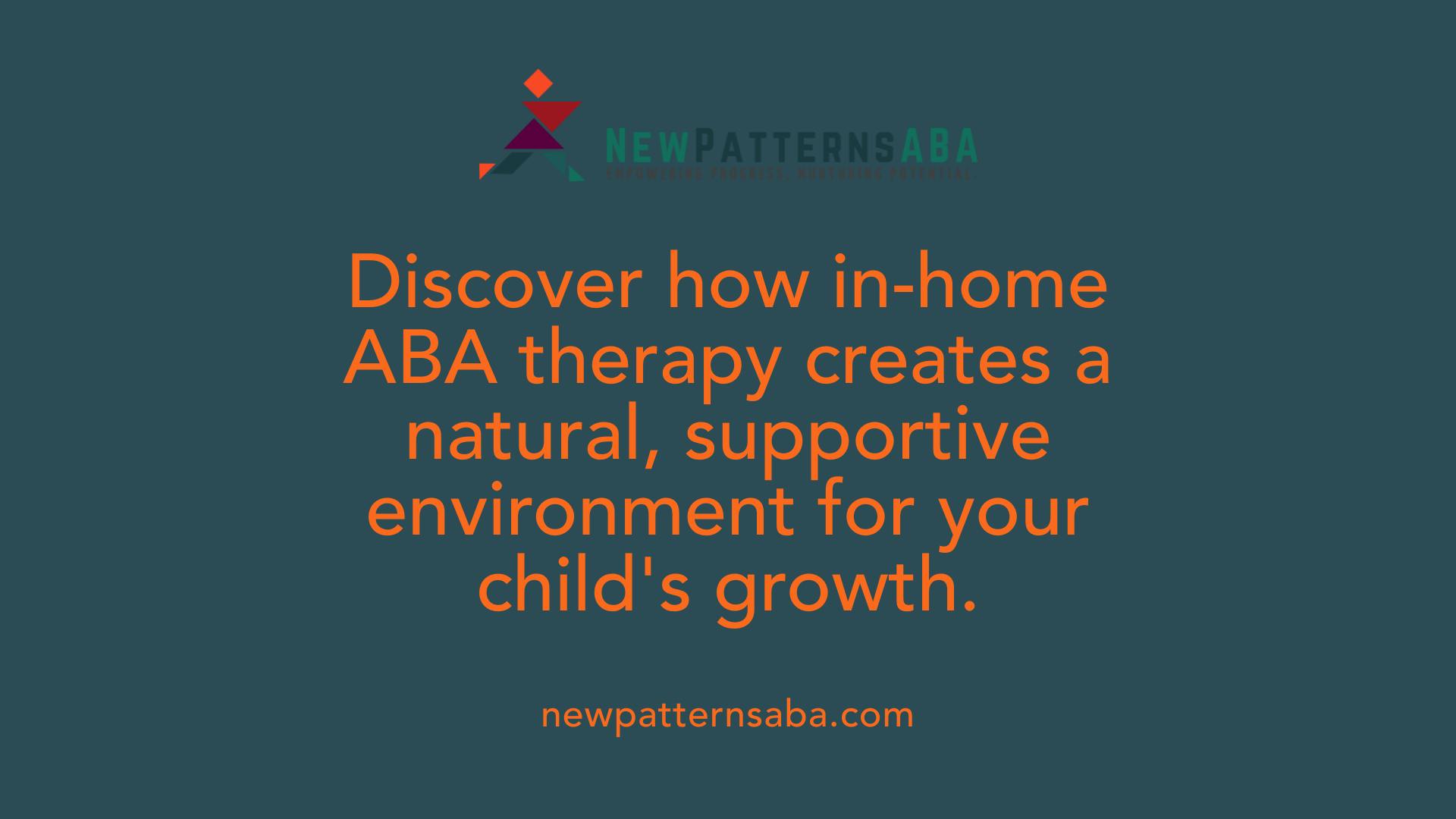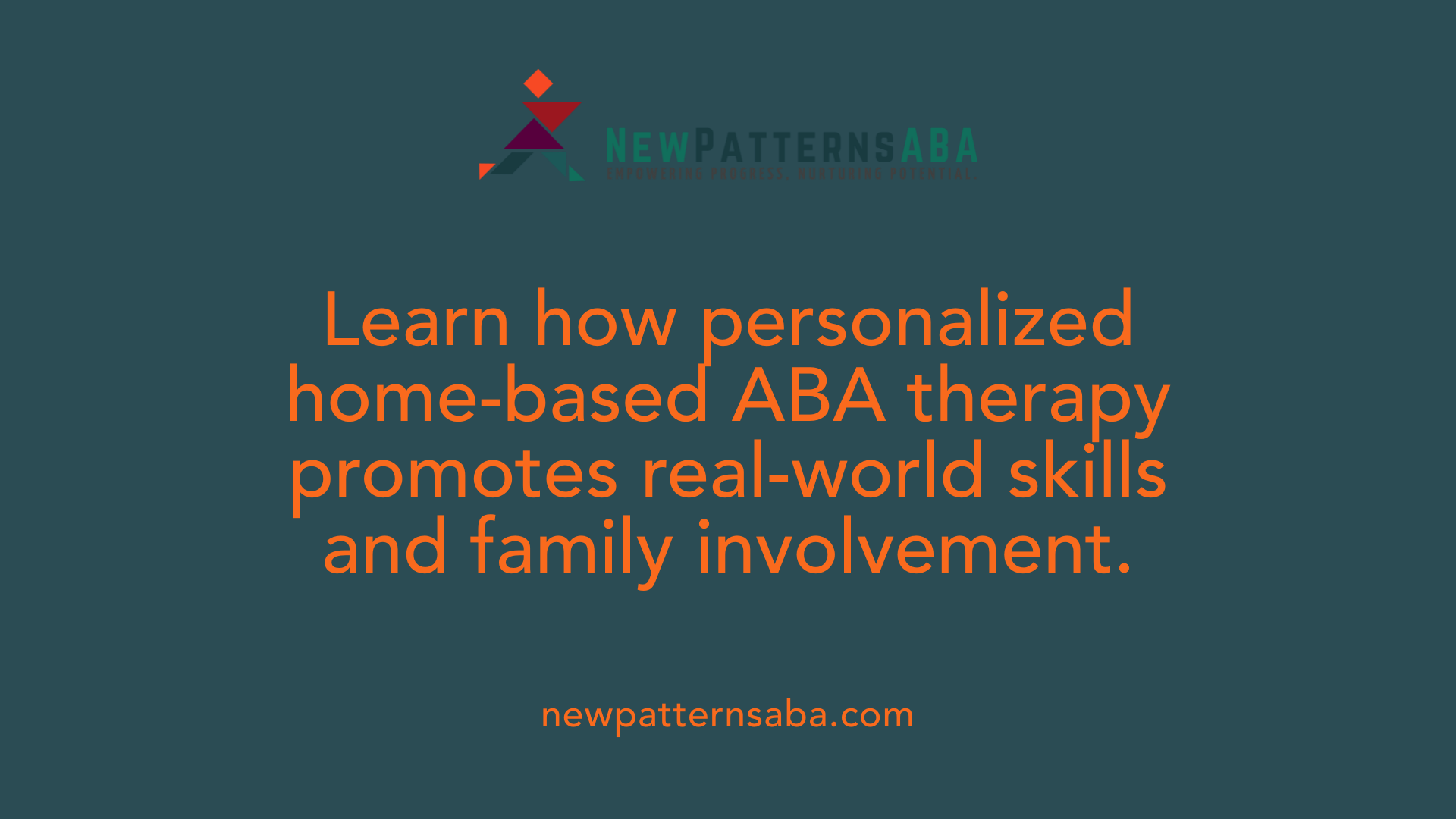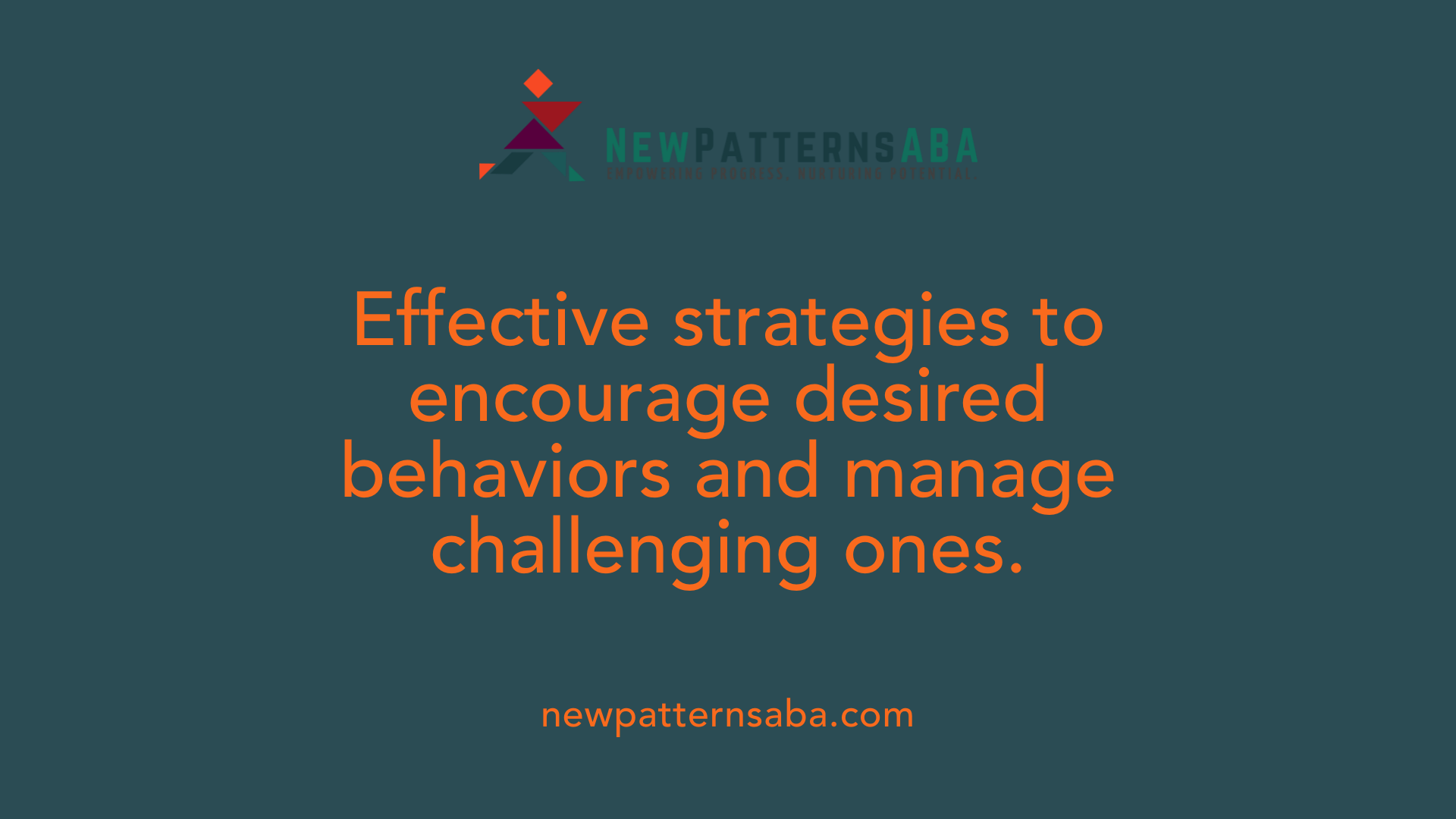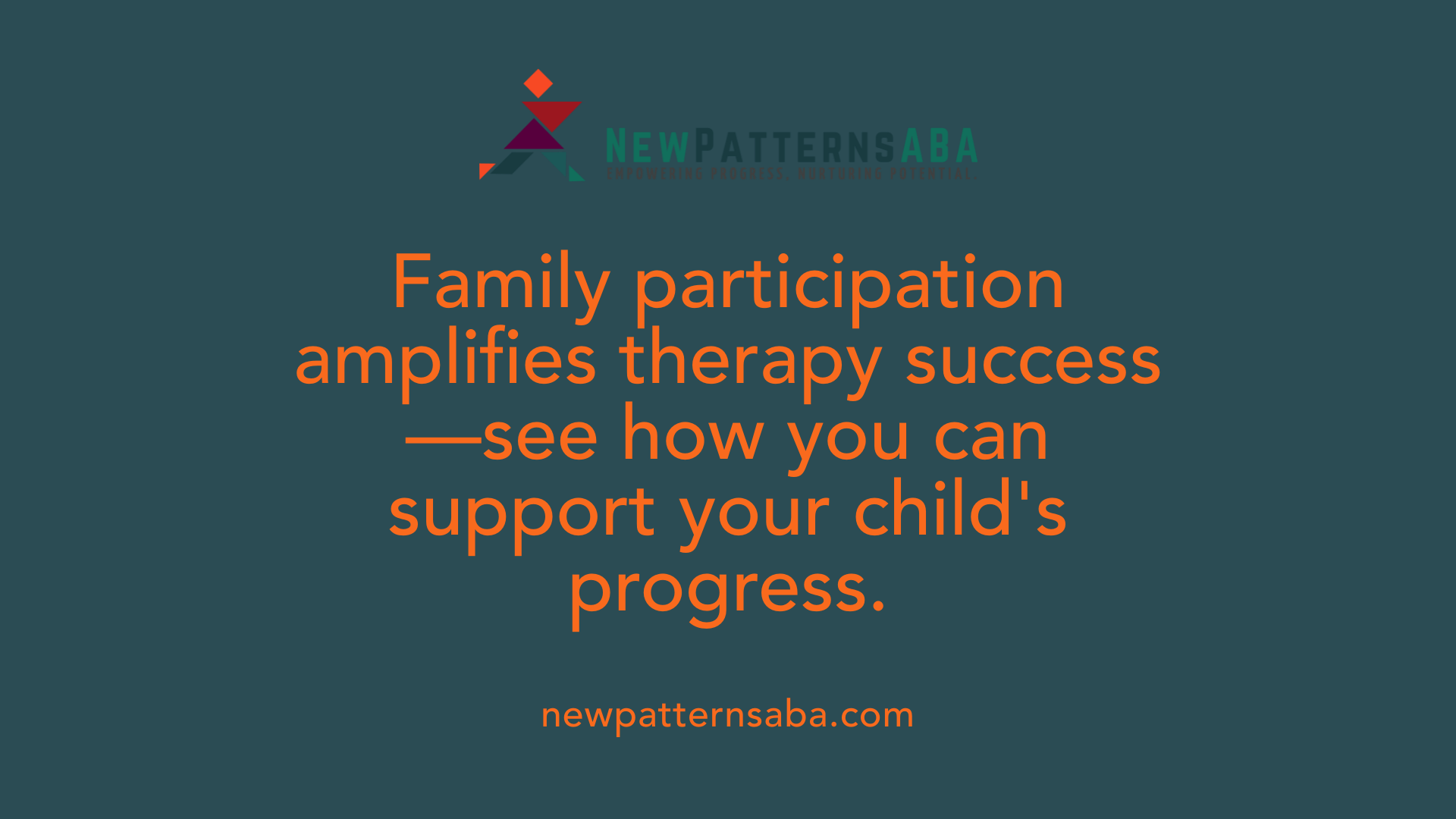Unlocking Potential in Familiar Environments
Building positive behavior patterns is a cornerstone of supporting children with autism and developmental delays. In-home ABA therapy offers a personalized, natural setting that enhances learning, behavior management, and family involvement. This comprehensive approach ensures that therapeutic gains translate into everyday life, empowering children and their families to thrive.
Understanding In-Home ABA Therapy

What is in-home ABA therapy?
In-home ABA therapy involves providing Applied Behavior Analysis (ABA) services directly within a child's home. This setting allows therapists to work in familiar surroundings, making learning more natural and comfortable for the child.
Therapists use strategies like positive reinforcement, prompting, and task breakdowns to teach various skills. The therapy emphasizes active family involvement, where parents or guardians participate and receive training to support their child's progress.
Assessment by a Board Certified Behavior Analyst (BCBA) guides the creation of personalized treatment plans targeting specific goals such as communication, social skills, personal hygiene, and daily routines. This tailored approach helps children generalize skills across different environments and reduces disruptive behaviors.
Implementation includes structured sessions that often last 1 to 3 hours, scheduled multiple times a week. Using familiar items and routines from home, the therapy integrates seamlessly into everyday life, promoting better engagement and faster progress.
Overall, in-home ABA therapy offers a convenient, natural, and effective method for addressing the unique needs of children with autism, fostering skill development while strengthening family bonds.
Benefits of In-Home ABA Therapy

What are the benefits of in-home ABA therapy for individuals with autism or developmental delays?
In-home ABA therapy provides a personalized experience tailored to each child's unique needs. One of the main advantages is that therapy takes place within the child's familiar environment, which helps reduce anxiety and makes learning more effective. This setting encourages children to develop skills in real-life situations, translating classroom techniques into daily routines.
A significant benefit is skill generalization. Because children practice new behaviors in the actual places they encounter daily—such as the kitchen, bedroom, or playground—they are more likely to apply these skills outside therapy sessions. This natural practice helps build independence and confidence.
Family involvement is a cornerstone of in-home ABA. Caregivers actively participate, learn strategies, and implement techniques at home. Training from therapists empowers families to support ongoing development, ensuring consistency and reinforcing positive behaviors.
Other advantages include minimized transportation challenges, less exposure to health risks, and increased flexibility in scheduling sessions. The continuous presence of family members during sessions fosters better communication and collaboration, leading to more sustainable progress.
In summary, in-home ABA therapy supports meaningful skill growth by combining tailored interventions, real-world practice, and active family participation, promoting a higher quality of life for individuals with autism or developmental delays.
Techniques and Strategies in ABA Therapy

What are some common techniques used in implementing ABA therapy at home?
In-home ABA therapy utilizes a variety of proven methods to effectively teach new skills and reduce challenging behaviors. Positive reinforcement is fundamental, where desired behaviors are rewarded with praise, privileges, or preferred items to encourage their recurrence. This approach helps foster motivation and engagement during sessions.
Another widely used technique is Discrete Trial Training (DTT). It involves breaking down complex skills into smaller, manageable steps, teaching each step systematically, and providing reinforcement after successful attempts. This structured method allows for clear progress tracking and skill mastery.
Prompts such as physical gestures, verbal cues, or visual signals are also key in guiding children through tasks. Over time, prompts are gradually faded to foster independence and confidence.
Natural environment teaching emphasizes practicing skills in everyday settings like the kitchen or playground. This encourages children to apply learned behaviors in real-life situations, improving generalization.
Establishing routines supported by visual aids offers predictability and reduces anxiety. Charts, pictorial schedules, and visual timers help children understand what to expect, making transitions smoother.
Collaboration with ABA professionals is vital for guidance and support. Parents monitor progress through data collection methods, such as checklists or videos, and adapt strategies as the child's needs evolve.
In sum, combining reinforcement, prompting, structured routines, and natural teaching enhances the effectiveness of ABA therapy at home, promoting skills development and behavioral improvements.
Positive Reinforcement and Behavior Management
 What positive reinforcement strategies are used in ABA therapy?
What positive reinforcement strategies are used in ABA therapy?
In ABA therapy, positive reinforcement plays a vital role in promoting desired behaviors. Therapists use various rewards such as verbal praise to acknowledge good behavior immediately. Tangible items like snacks, toys, or favorite activities serve as motivators. Physical contact, like a high-five or a hug, can also be effective if appropriate and welcomed by the child. Engaging activities or privileges further enhance motivation, encouraging children to repeat positive behaviors.
How does ABA therapy support behavioral development and management?
ABA therapy supports children’s behavioral growth by systematically applying principles rooted in learning science. It involves analyzing the antecedents (triggers) and consequences of behaviors using models like the A-B-C framework—Antecedent, Behavior, Consequence. This allows therapists to tailor interventions focused on skill acquisition and reducing challenging behaviors such as aggression or tantrums.
A core strategy includes teaching replacement behaviors—positive actions that serve the same function as problematic ones. For example, encouraging a child to use words instead of acting out aggressively or providing a calming technique like deep breathing.
Visual aids, such as charts, schedules, or pictorial instructions, are commonly used to clarify expectations and steps in tasks, helping children understand and follow through.
Additionally, calming techniques like guided visualization or deep breathing are taught to help children respond constructively to feelings of frustration. These strategies, combined with consistent routines and family involvement, create a supportive environment that fosters positive interactions and effective behavior management.
Implementing these reinforcement strategies and techniques at home can significantly enhance behavioral progress. Parents and caregivers are trained to reinforce skills outside therapy sessions, ensuring consistency and maximizing the child's development.
| Reinforcement Type | Examples | Purpose | |---------------------|----------|---------| | Verbal Praise |
The Role of Family in ABA Therapy

What role does family involvement play in ABA therapy?
Family participation is crucial in ABA therapy because it helps ensure that skills learned during therapy sessions are carried over into daily life. When parents and caregivers actively engage in the process, they can reinforce positive behaviors and help sustain progress outside of structured sessions.
In-home ABA therapy, in particular, offers a unique advantage: it allows therapists to observe natural behaviors within the child’s everyday environment. This close involvement makes it easier for families to understand the strategies used and apply them consistently.
Parents are often trained by therapists on how to implement techniques like positive reinforcement and prompting. This training empowers them to support their child's development effectively, fostering a collaborative approach.
Supporting routines at home and practicing skills regularly help children generalize learned behaviors in different settings. When families participate, children are more motivated and experience increased emotional security.
Additionally, family involvement helps tailor interventions to fit the child's cultural and household context, making therapy more relevant and effective. Overall, engaged families play an essential role in the child's progress and in making ABA therapy a seamless part of everyday life.
Applying ABA in Daily Routines
How can ABA techniques be integrated into daily routines at home?
Implementing ABA techniques within home routines involves creating a consistent, structured environment that supports learning and development. One practical approach is establishing clear routines using visual supports like picture schedules or visual cues. These tools help children understand what to expect throughout the day, reducing confusion and anxiety.
Positive reinforcement plays a vital role. When children complete a task or display good behavior, rewarding them with praise, tokens, or preferred activities encourages them to repeat those behaviors. This reinforcement builds motivation and fosters independence.
Breaking complex activities into smaller, manageable steps is especially beneficial. Tasks such as brushing teeth, dressing, or doing homework can be dissected into simple actions. Providing prompts and gradually fading them as the child gains confidence helps develop skills at a comfortable pace.
Using prompt fading strategies ensures children do not become overly dependent on supports. Initially providing more assistance and then reducing prompts encourages autonomous behavior.
Additionally, incorporating natural environment teaching—where learning occurs during typical daily activities—allows children to apply skills in real-life settings. Modeling appropriate behaviors and practicing routines regularly across different contexts support generalization, meaning the child can transfer learned skills from therapy sessions to everyday life.
Overall, integrating these ABA strategies into daily routines enhances learning, supports skill development, and promotes consistency, which is essential for meaningful progress in a familiar environment.
Effectiveness and Outcomes of In-Home ABA Therapy
Research evidence consistently supports the benefits of in-home ABA therapy for children with autism. Studies report high compliance rates ranging from 56% to 99%, with many parents noting significant progress in their child's development. These positive outcomes include improvements in communication, social skills, and daily functioning.
Progress is meticulously tracked through detailed data collection methods such as behavior checklists, charts, and video recordings. This systematic monitoring allows therapists and families to adjust strategies and ensure continuous growth.
Many success stories highlight how children gain new skills faster and more sustainably when therapy is tailored to their environment. Family involvement plays a vital role, with parents integrating learned techniques into daily routines and witnessing tangible improvements.
Effectiveness assessments often show that children demonstrate marked improvements in areas like arm-hand coordination, independence in daily tasks, and social interactions. Importantly, parental stress levels generally do not increase and sometimes decrease as they become more confident in managing behaviors.
Overall, in-home ABA therapy proves to be a highly effective approach. It not only fosters skill acquisition but also enhances family engagement, leading to meaningful, lasting change.
| Aspect | Evidence | Additional Details |
|---|---|---|
| Compliance | 56-99% | High adherence by families ensures consistency |
| Progress | Documented improvements | Through behavior tracking and assessments |
| Family Feedback | Positive experiences | Increased confidence and skill reinforcement |
| Areas of Improvement | Communication, social skills, independence | Tailored and measurable goals |
| Overall Effectiveness | Widely recognized | Supported by research and clinical studies |
Fostering Growth and Independence at Home
In-home ABA therapy is a powerful and flexible approach that supports children with autism and developmental delays in developing essential skills. By integrating proven techniques within the natural routines of daily life and involving families actively, this therapy fosters meaningful progress and long-term independence. Through personalized interventions, consistent practice, and collaboration, families can create a nurturing environment that maximizes each child's potential.
References
- Benefits of ABA Therapy at Home and What to Expect
- In-Home ABA Therapy - Surpass Behavioral Health
- Tips for Managing Aggression in Autism with In-Home ABA Therapy
- Implementing In-Home ABA Therapy
- Maximizing Progress: Inside an ABA Therapy Session for Autism
- Benefits of In-Home ABA Therapy for Children - UTBS
- 7 Real-World ABA Therapy Examples, Activities & Their Benefits





